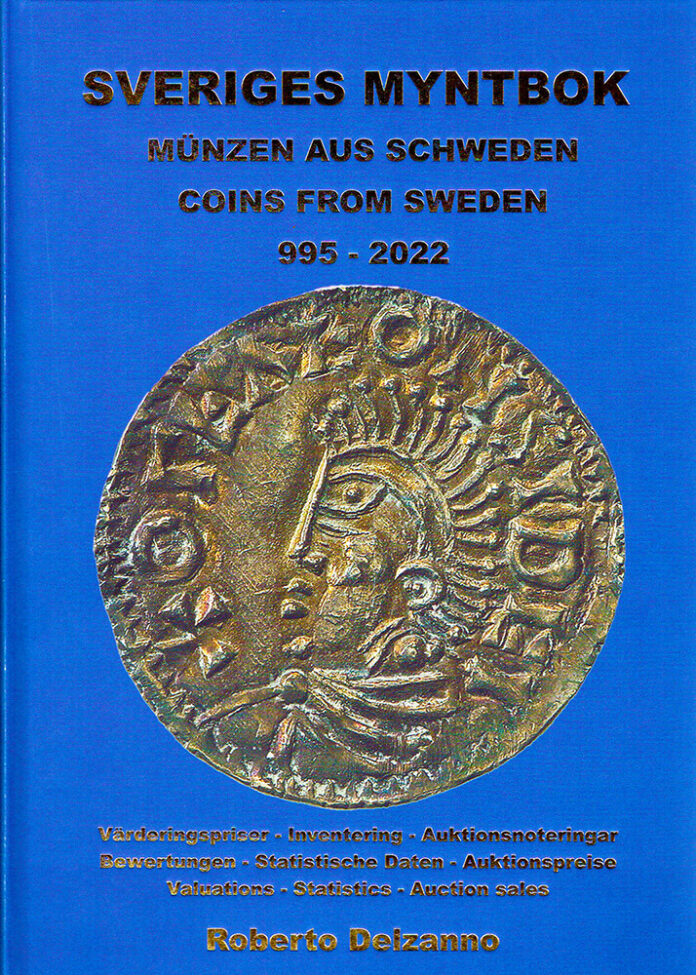
Roberto Delzanno set quite an ambitious task for himself: not only did he present a historically annotated catalogue of all Swedish coins, he also provides statistics to demonstrate their occurrence and estimated prices for specimens of several conditions from very good to extremely fine / FDC. The work is richly illustrated and certainly easy to use, at least if you are already very familiar with Swedish coinage. Beginners, however, will struggle. And that’s a pity. After all, every page of the catalogue proves how much work and effort went into it. When reading the book, you realize that the meticulous obsession for detail could have created a great work for decades to come if the author had had a few helpers around him who made him think about what users actually need.
For anyone who is looking for a catalogue to identify Swedish coins will be completely lost. Unless he likes to leaf through thick books. Or prefers to identify coins with the help of CoinArchives and the like anyway. Features to help identify coins, such as indices, are completely missing. And it is rather by chance that one encounters the table of contents (which, by the way, does only exist in the first book if I haven’t missed it despite looking for it several times). And one wonders why the typesetter decided to leave the third page of the book blank and to hide the table of contents on the fourth page. I admit it, I am old-fashioned and have leafed through too many books in my life. That’s why I expect them to have a certain structure. And, unfortunately, I did not understand the structure of this book.
Nevertheless, the author made an honest effort to reach as many people as possible with his work. He decided to write the most important texts in three languages, in Swedish, German and English. However, that does not apply to all parts. The introductions are written in three languages, although it can be difficult to find the entire text in a certain languages. On page 227 and 228, for example, the German text is scattered over four different places. And the texts that indicate how and why certain sub-types can be distinguished are only available in Swedish. Regarding terms such as “Hammarpräglad” and “Valsverkpräglad”, you might still be able to guess why the author differentiated the coin types. But in other cases one rather stares at the pictures (which are excellent) and wonders what is supposed to be the big difference between the coin types. Thus, you are left with three options: You can understand the book as a kind of a riddle and intellectual challenge. You learn Swedish. Or you feed Google Translate with the Swedish explanation, and are once again very glad that Google exists.
You can tell from every page of the book how long and intensively the author studied Swedish numismatics. He is so familiar with his system that it is hard to imagine for him that there are people who pick up his book for the first time ever. Yes, there is an introduction. No, it does not explain everything one would like to know. For example what certain abbreviations above charts mean. AR and TYP are rather easy to understand. AR is the year and TYP actually indicates the coin type. But what does CAP mean? And wouldn’t it have been easier to add tables of concordance at the end instead of filling charts with enigmatic abbreviations of Swedish standard literature, the meaning of which one has to search over and over again on the pages between advertisements and the introduction?
Moreover, it doesn’t meet any standard – neither in scholarly nor popular scientific terms – to only mention in the introduction that entire historical texts were taken from auction catalogues. If a text is quoted word-for-word, there needs to be a reference that allows you to identify the source. A little asterisk at the beginning of the text is not enough. Period.
It is just annoying that no editor has looked at this book and revised minor details. It would have been so easy to solve the problem of abbreviations: one could have created a small bookmark indicating the abbreviations and their explanations. Perhaps an editor would have also pointed out that one should either assign a number to the medals that can be used as a reference or completely refrain from including them in the work in order to lighten the about 1,350-pages heavy book. An editor would have remarked that advertisements should be placed at the end of the book and that the name of the author, his email address and his website do not need to be mentioned on every single blue chapter separator.
The book at hand is wonderful. And it could replace any Swedish catalogue. However, in order to do so the author ought to have collaborated with an editor and had the layout made by an experienced typesetter. Thus, Sveriges Myntbok is a prime example for the fact that profound knowledge and countless hours of work are not enough to make an easy-to-use book for coin enthusiasts.
Roberto Delzanno sells the book on his own website.
In Germany, you can purchase the book also from the Gietl-Verlag.




